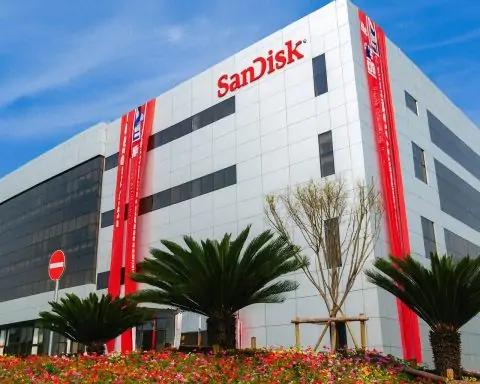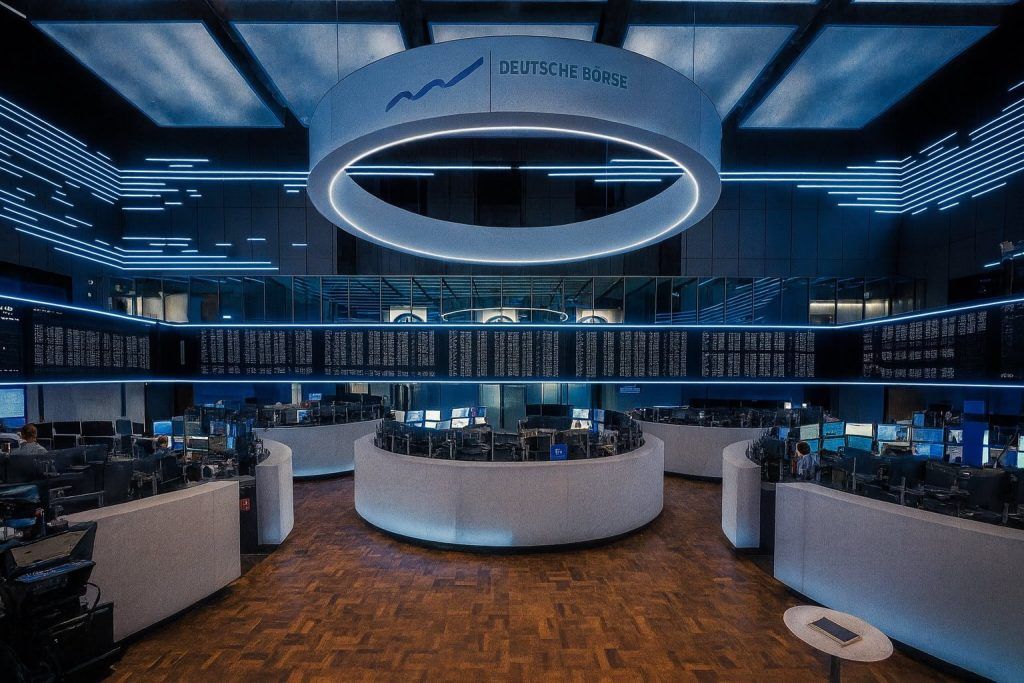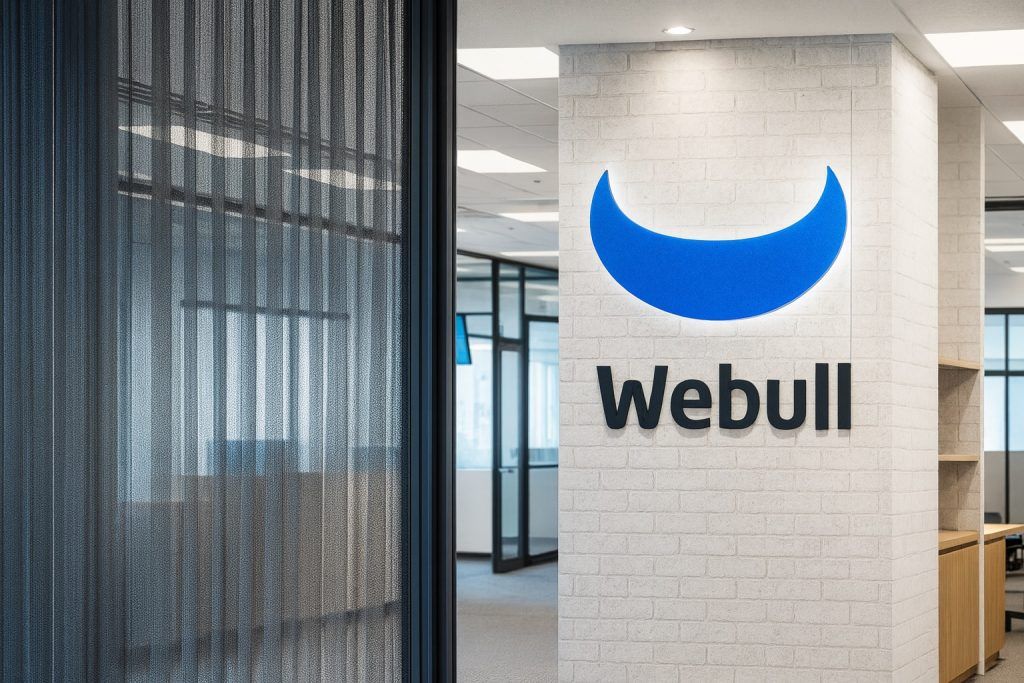- TSMC near record highs: Taiwan Semiconductor Manufacturing Co. (NYSE: TSM) shares have surged to around $294 (briefly above $300 intraday) after a record-setting rally fueled by soaring AI chip demand and major deals – the stock is up about 45% year-to-date and 63% over the past 12 months [1].
- Blowout growth & outlook:Q2 2025 revenue jumped +44% YoY to $30.1 billion with robust margins [2]. TSMC’s management is guiding for ~30% full-year growth, and upcoming Q3 2025 earnings (due Oct 16) are expected to show +25–30% YoY gains [3].
- Analysts bullish: Big banks are turning increasingly positive. Morgan Stanley urges investors to “accumulate ahead” of a potential guidance boost on Oct 16 amid booming AI demand [4]. Bank of America just hiked its target to NT$1,600 (≈$330) citing improved pricing power and momentum in 2nm chips [5].
- Geopolitics in focus: Taiwan’s government rejected U.S. calls for a “50-50” chip output split, saying it “never agreed…nor would we” move half of production to the U.S. [6]. Meanwhile, Chinese military drills highlighted how Taiwan’s 97%-seaborne fuel supply could be choked off [7], prompting Taipei to rethink energy security and the U.S. to backstop Taiwan’s LNG shipments [8].
- AI “supercycle” leadership: Analysts see ~32% annual growth in AI chip demand through 2033, positioning TSMC’s cutting-edge 3nm/2nm foundries for outsized long-term growth [9]. TSMC is on track to start 2nm mass production by Q4 2025 and plans a next-gen 1.4nm fab by 2028 [10], aiming to stay ahead of rivals in technology.
Overview: TSMC’s Business and Recent Performance
Taiwan Semiconductor Manufacturing Co. (TSMC) is the world’s largest contract chipmaker – a “pure-play” foundry that fabricates advanced semiconductors for clients like Apple, NVIDIA, AMD and more [11]. Rather than selling its own chips, TSMC builds chips to order, focusing on cutting-edge manufacturing processes. This model has made TSMC a pillar of global tech supply chains, commanding an estimated 60%+ market share of the overall foundry market (and over 90% in the most advanced nodes) [12]. In effect, TSMC manufactures ~90% of the world’s most advanced processors, putting it at the heart of technologies from smartphones to cloud data centers [13]. As one report noted, TSMC’s dominance in leading-edge (3nm) chips and its head start on 2nm keeps it “far ahead” of would-be competitors in the race to power the next generation of high-performance computing [14].
Financially, TSMC has been on a strong growth trajectory. In Q2 2025, revenue reached US$30.1 billion – a +44% year-on-year surge – with net profit of T$398.3 billion, driven by booming orders for high-performance chips [15]. First-half 2025 sales totaled about $60.5 billion [16]. For Q3 2025, management guided revenue of $31.8–33 billion and signaled roughly +30% full-year growth [17] – an impressive clip for a company of TSMC’s size. Gross profit margins remain very high (mid-50s%), reflecting TSMC’s pricing power and manufacturing efficiency [18]. The company is plowing $38–42 billion into capital expenditures this year to expand capacity and maintain its technology edge [19].
Business mix: TSMC’s most advanced process technologies (5-nanometer, 3-nanometer, etc.) are in extremely high demand. Cutting-edge 3nm and 5nm chips now contribute about 60% of TSMC’s revenue [20]. Notably, High-Performance Computing (HPC) chips – used in data centers, AI accelerators, and other powerful computing devices – have rapidly become TSMC’s largest segment, making up 60% of revenue in Q2 2025 compared to just 27% from smartphones [21]. This marks a strategic shift away from mobile devices toward AI/datacenter clients. TSMC’s close partnerships with industry leaders (it manufactures core chips for NVIDIA, OpenAI, Apple, Microsoft, and others) mean it is essentially the arms supplier of the AI revolution, benefiting from surging demand for advanced processors. Investor enthusiasm has risen alongside this growth: TSMC’s Taipei-listed shares hit a record high of NT$1,370 on Oct 2, 2025 [22], and the U.S. ADR (NYSE: TSM) likewise spiked to all-time highs, trading above $290 in early October [23]. Year-to-date, TSMC’s stock is up nearly 45% (over 60% in the past 12 months) [24], dramatically outperforming broader market indices. In fact, TSMC’s rally singlehandedly helped push Taiwan’s TAIEX stock index to record levels, and TSMC now accounts for over 30% of the entire index’s market cap [25]. With a current market capitalization around NT$35 trillion (~US$1.1 trillion), TSMC ranks among the world’s most valuable semiconductor firms [26].
Current Stock Price and Key Indicators (Early Oct 2025)
As of October 8, 2025, TSMC’s U.S. shares trade around $294, just a few dollars shy of their record closing high (they briefly broke above $300 for the first time this week) [27]. In fact, TSMC touched an intraday high of ~$307 on Oct 7 before some profit-taking [28]. Even at ~$294, the stock has climbed ~20% in the past month alone amid feverish AI optimism. For context, TSMC ADRs began the year near $200 and even dipped as low as ~$135 during a mid-year market pullback [29] – so the current level represents a dramatic upswing in a matter of months.
Market metrics: TSMC’s 52-week trading range spans roughly $134 – $307. The recent rally has expanded its valuation multiples: for instance, the stock now trades around 25–30× projected 2025 earnings (depending on the estimate) and sports a price-to-book near 8.1, with enterprise value/EBITDA about 15.2. Despite the richer valuation, analyst sentiment is broadly bullish – the average 12-month price target is ~$301, and many analysts rate TSMC a “Buy” or equivalent. TSMC also pays a modest dividend yield around 1–2%, and its stock beta ~1.2, indicating slightly higher volatility than the market. Overall, at a $1+ trillion market cap, TSMC is firmly in the global mega-cap club, and investors are keenly watching whether it can deliver the growth to justify these lofty levels.
Technical trends: From a technical analysis standpoint, TSMC’s chart shows a strong uptrend but hints of near-term consolidation. The stock’s surge to ~$307 in early October has established a double-top resistance around the $305–$307 level, while recent pullbacks found support near ~$294 (a key Fibonacci retracement level) [30] [31]. TSMC closed at $304.52 on Oct 8, and momentum indicators like the 14-day RSI (~72) have now entered overbought territory [32]. Notably, all major moving averages are in bullish alignment (the 50-day MA crossed above the 100-day and 200-day in a “golden cross”), confirming a robust long-term uptrend with the stock trading well above its rising 50-day (~$275) and 200-day (~$215) averages [33]. However, with RSI and stochastic oscillators flashing overbought and volume on the latest upswing slightly lower than on the prior dip, analysts see potential for a short-term pause or pullback of a few percent [34] [35]. Key levels to watch are $307 on the upside (a breakout above which could signal another leg higher) and around $294 below (which now acts as near-term support) [36] [37]. In the absence of any major surprises, a period of consolidation between the high-$290s and low-$300s could allow the stock to digest its recent gains before any decisive move.
Recent News Highlights (Late September – Early Oct 2025)
In the weeks leading up to October 9, a flurry of major developments – from analyst upgrades to geopolitical headlines – have swirled around TSMC. Below is a recap of key recent news impacting the stock:
- AI boom drives record rally: TSMC’s share price has been propelled to new heights by the ongoing artificial intelligence frenzy. On Oct 2, reports emerged that OpenAI CEO Sam Altman visited Taiwan to meet with TSMC and other partners about advanced AI chips, helping lift Taiwan’s stock market to all-time highs [38]. A few days later, a blockbuster OpenAI–AMD partnership (announced Oct 6) sent AMD’s stock skyrocketing ~30%, and TSMC – as a key chip supplier to AMD – also jumped in sympathy [39]. Investors are betting that surging demand for AI accelerators will keep TSMC’s fabs running at full capacity. “Strong demand for AI infrastructure is supporting TSMC,” noted analysts, as TSMC’s cutting-edge 3nm chips are crucial for training AI models [40]. Indeed, TSMC has reportedly secured 2nm chip orders from 15 customers (including NVIDIA, AMD, Apple and others) eager to adopt its next-gen technology as soon as it’s ready [41]. This AI-fueled euphoria has resulted in TSMC’s U.S. shares climbing 20%+ in the past month [42], briefly valuing the company at over $1 trillion. Market observers described the mood as “euphoric” after TSMC’s stock hit an intraday high of $307 on Oct 7 amid frenzied trading [43].
- Morgan Stanley’s bullish call: On Oct 7, Morgan Stanley stoked optimism by urging investors to “buy TSMC ahead of a guidance boost” expected with next week’s earnings [44]. In a research note, the bank labeled TSMC a “catalyst-driven idea” and predicted the stock “will rise if [TSMC] raises full-year revenue guidance again due to strong AI demand.” Morgan Stanley suggested accumulating shares before Oct 16 (when TSMC will hold its Q3 results call) [45]. They anticipate TSMC’s management could upgrade its 2025 sales growth outlook from ~+30% to +32–34% on the back of booming orders [46]. The team also noted that wafer pricing negotiations for 2026 are trending favorably – they see a possible price hike next year given capacity is tight [47]. Morgan Stanley even laid out scenario analysis: in a bull case where TSMC raises guidance above +35%, they projected the stock could pop +3–5%; their base case of a modest guidance bump (+32–34%) might add 0–2% to shares; and even a scenario of no guidance change would likely limit downside to –0–5% [48]. This upbeat call added fuel to TSMC’s mid-week momentum.
- Price target upgrades roll in:Wall Street’s confidence in TSMC has been climbing alongside its stock. In mid-September, Barclays raised its TSMC price target to $325 (from $275) while reiterating an Overweight rating [49]. Barclays analyst Simon Coles cited TSMC’s “continued leadership during the AI expansion” and strong execution, even calling TSMC their “top semiconductor pick” [50]. Similarly, China’s Huatai Securities bumped its target to $320 (Buy rating), noting significant gains in TSMC’s average selling prices and profitability, especially after its successful 3nm chip launch [51]. Then on Oct 7, Bank of America Securities joined the bulls – analyst Brad Lin upgraded TSMC’s target price from NT$1,400 to NT$1,600 (roughly US$330) [52]. BofA cited “an improved pricing outlook and stronger earnings visibility through 2026,” and accordingly raised its earnings forecasts for TSMC by ~8–9% for the next couple of years [53]. Their projections show a strong ramp-up of 2nm production in 2026, fueling ~24% revenue growth that year [54]. Notably, BofA estimates 2nm chips could contribute ~9% of TSMC’s revenue by 2026, quickly matching the share of older 7nm generation chips [55]. Such analyst endorsements have further validated market optimism around TSMC’s trajectory.
- Taiwan rejects U.S. chip deal idea: On the geopolitical front, Taiwan–U.S. chip talks made headlines after U.S. officials floated a proposal that Taiwan ensure 50% of chip production happens on American soil – a bid to reduce dependence on Taiwan’s fabs. This week, Taiwan’s government flatly rejected the idea. “Our negotiating team has never made any commitment to a 50-50 split on chips…nor would we agree to such conditions,” asserted Taiwan’s Vice Premier Cheng Li-chiun on Oct 1, following trade talks in the U.S. [56]. Taiwan’s leaders stressed they never even discussed such a provision and intend to keep the bulk of advanced semiconductor production at home [57]. Instead, Taipei is seeking a tariff reduction on tech exports to the U.S. rather than giving in to relocation pressure [58]. This public stance underscores the political sensitivities around TSMC’s location: Washington wants more chip capacity onshore for security reasons, while Taiwan views TSMC as a strategic national asset it won’t easily cede. The episode highlights TSMC’s geopolitical importance – it sits at the center of U.S.-China-Taiwan tech tensions.
- Chinese drills raise supply risk: Meanwhile, Chinese military exercises near Taiwan in late September have raised fresh concerns about supply chain vulnerability. Beijing conducted large-scale air and naval drills around Taiwan, which reportedly demonstrated how an island blockade could imperil Taiwan’s energy supply (97% of which is imported by sea) [59]. Analysts noted the exercises revealed how easily shipping lanes could be disrupted – potentially crippling Taiwan’s power grid and chip production if fuel imports were cut off [60]. In response, Taipei is urgently rethinking its energy strategy: the government is boosting fuel stockpiles and even considering reversing course on nuclear power (despite having shut its last reactor earlier this year) [61]. In Washington, two U.S. senators introduced legislation to support Taiwan’s energy security, including providing insurance guarantees for critical LNG shipments in the event of a blockade [62]. For TSMC, these geopolitical rumblings are a double-edged sword – business is booming, but the risk of disruption to its Taiwan operations (through conflict or blockade) is a persistent overhang that investors cannot ignore.
- Tech roadmap & expansion updates: On the technology front, TSMC is barreling ahead with next-gen chips. Executives have confirmed that mass production of 2-nanometer chips (its forthcoming “N2” process) is on track to begin by late 2025, which would make TSMC the first in the world to reach volume production at 2nm [63]. Industry sources say around 15 customers are already engaged on 2nm – about 10 of them in high-performance computing – including NVIDIA’s planned “Rubin” ultra-GPU, AMD’s next-gen MI450 accelerators, future Apple silicon, and even portions of Intel processors [64]. In preparation, TSMC is phasing out all China-made equipment from its 2nm lines to ensure eligibility for U.S. subsidies (per CHIPS Act rules) [65]. Looking further out, TSMC has announced a roadmap for an even more advanced 1.4nm fab in Taiwan by 2028, underscoring its commitment to stay ahead of Moore’s Law. At the same time, TSMC’s global expansion continues, albeit with some challenges. In the United States, TSMC is investing heavily in a semiconductor “GigaFab” complex in Phoenix, Arizona – eventually up to 6 fabs plus two chip packaging plants and an R&D center [66]. The first phase (two fabs for 4nm and 3nm production) has faced construction delays and higher costs, pushing initial production into 2025–2026. TSMC even flew in hundreds of experienced engineers from Taiwan to help get the Phoenix fab on track [67]. Despite setbacks, the company has doubled down on its U.S. commitment, with total Arizona investment now slated at $40+ billion (and potentially $60 billion over the next decade if all phases proceed) [68]. Eventually ~one-third of TSMC’s cutting-edge 2nm capacity could be located in the U.S. once the Arizona cluster is fully built out [69]. Likewise, in Japan, TSMC (with Sony) is constructing a new fab for 22/28nm chips, and it just green-lit a €10 billion fab in Dresden, Germany for 22/16nm automotive chips [70]. These overseas fabs aim to diversify TSMC’s geographic footprint – providing some buffer against concentrated risk in Taiwan – but they come with trade-offs. TSMC has noted that its overseas plants will be ~50% more expensive to operate than its Taiwan fabs, due to higher labor and construction costs and a less centralized supply chain [71]. Certain specialty suppliers (chemicals, equipment) are still mostly based in Asia, making duplication abroad challenging [72] [73]. In short, TSMC will remain anchored in Taiwan for its core R&D and highest-volume manufacturing for the foreseeable future [74], even as it cautiously adds capacity in the U.S., Japan and Europe to satisfy governments and global customers.
All told, early October 2025 has been an eventful period for TSMC. The stock’s record highs – buoyed by concrete wins in AI and upbeat forecasts – reflect tremendous optimism. Yet at the same time, significant news on the geopolitical front serves as a reminder of the unique risks tied to TSMC’s dominance. Investors are now eagerly awaiting the company’s Q3 earnings report and outlook on Oct 16, which should shed more light on how TSMC is navigating this high-stakes environment [75].
Expert Commentary and Analysis
Industry experts and market analysts have been weighing in on TSMC’s outlook, generally lauding the company’s strengths in AI and advanced manufacturing, while also cautioning about valuation and geopolitical risks. Below are some notable perspectives as of October 2025:
- Analysts bullish on AI leadership: “TSMC is our top pick in semiconductors,” declared Barclays analyst Simon Coles after raising his price target to $325 [76]. Coles pointed to TSMC’s “continued leadership during the AI expansion” and strong execution across business lines. Similarly, Leping Huang of Huatai Securities (target $320) noted that TSMC’s technological edge at advanced nodes has driven surging chip prices and profits in recent years [77]. Many analysts believe the ongoing AI “supercycle” strongly favors TSMC. As brokerage Mitrade summarized, the consensus is that AI chip demand could grow ~32% annually through 2033, and TSMC’s ability to deliver cutting-edge silicon ahead of others puts it in prime position to capture a large share of this growth [78].
- Morgan Stanley’s take – short-term optimism: The Morgan Stanley team has turned decidedly upbeat on TSMC in the near term. They see TSMC as one of the best plays on AI infrastructure and recommend buying before the upcoming earnings catalyst. “We expect TSMC’s share price to rise if it raises full-year revenue guidance… We suggest accumulating [shares] ahead of October 16,” the bank wrote, citing stronger semiconductor demand and a potential 2026 price hike as catalysts [79]. Morgan Stanley emphasizes TSMC’s rare position as a “must-have” supplier for any company building advanced AI systems – a testament to how indispensable TSMC’s technology has become for the industry.
- Customer praise – “indispensable” to AI: Top tech CEOs underscore TSMC’s importance. Jensen Huang, CEO of NVIDIA – whose AI GPUs are all manufactured by TSMC – recently lavished praise on the chipmaker. Huang called TSMC “indispensable” to AI innovation and said investing in TSMC is a “smart” move for those who believe in the future of AI [80]. This sentiment is echoed across Silicon Valley: TSMC’s bleeding-edge fabs enable the breakthroughs in graphics, AI and mobile chips that power modern tech products. TSMC’s own leadership often highlights the deep partnerships it has forged – in some cases co-designing chips with clients to optimize for its process technology [81]. The trust and tight collaboration between TSMC and firms like Apple or NVIDIA is cited as a key competitive advantage that would-be rivals struggle to match.
- Valuation and macro overhangs: Not all experts are uniformly bullish at current prices. Some caution that TSMC’s stock now reflects a lot of good news. Research firm Simply Wall St noted that after a ~250% stock gain over the past five years, TSMC’s valuation looks “moderately overvalued” on certain discounted cash flow metrics [82]. Meanwhile, prior to the recent surge, analysts at CFRA and BofA had price targets in the high-$200s [83] – suggesting limited upside from those levels – though those targets may be revised upward given the latest results. Macroeconomic factors also loom: TSMC’s fortunes are tied to global electronics demand, which can be cyclical. The broader chip sector faces potential headwinds from higher interest rates and the possibility that the post-pandemic tech upgrade cycle may peak and slow [84]. If AI hardware investment were to decelerate or if a global downturn hits tech spending, TSMC’s growth could moderate – a point a few contrarian analysts stress.
- Geopolitical risk assessments: Geopolitics remains the big wild card in TSMC’s story. Several analysts have openly addressed this overhang. Reuters’ Breakingviews column has described TSMC’s situation as a “silicon shield” – vital to many countries’ tech needs, yet vulnerable due to its Taiwan-centric production base. Hedge fund manager Steve Weiss (of Short Hills Capital) voiced his concern bluntly, stating that TSMC is essentially “at ground zero for a possible China–Taiwan conflict.” Even though TSMC was his fund’s largest holding, Weiss trimmed his position to manage that risk [85] [86]. Investors are well aware that any serious escalation of cross-strait tensions could send shockwaves through TSMC’s stock. That said, optimists counter that TSMC’s immense importance to both East and West might itself act as a deterrent to conflict – the “too valuable to fail” argument. In any case, analysts generally factor in a geopolitical discount on TSMC’s valuation compared to peers like Samsung or Intel, which operate in less contentious locales [87]. This risk factor likely keeps TSMC’s price-to-earnings multiple a bit lower than it otherwise might be, despite the company’s superior growth profile.
In summary, as of October 2025 the expert consensus on TSMC is strongly positive on fundamentals – few doubt the company’s technological prowess or near-term growth prospects – but tempered with clear-eyed awareness of external risks. The bull case centers on TSMC’s unmatched leadership in advanced chips (effectively making it the indispensable “arms dealer” of the AI age), while the bear case highlights potential pitfalls like geopolitical surprises, execution challenges in new fabs, and the fact that high expectations are already baked into the stock price [88].
Outlook and Forecasts (Short, Mid & Long Term)
With TSMC’s stock at historic highs, what comes next? Market watchers have sketched out scenarios for the short, medium, and long term:
- Short-Term (Next 3–6 Months): In the immediate term, sentiment remains upbeat heading into the Q3 earnings release on Oct 16. Analysts widely expect strong results and possibly another guidance upgrade, which would likely support the stock [89]. Morgan Stanley’s scenario analysis suggests limited downside even if TSMC merely meets its current outlook, and a potential +3–5% pop if management raises guidance again (their “bull case”) [90]. Indeed, TSMC’s leadership already hinted it may boost its full-year growth forecast (~30%→ low-30s%) given booming AI orders [91]. Barring any negative surprises, the consensus is that TSMC will finish 2025 on a strong note, riding momentum from the AI chip surge. That said, after the stock’s ~20% run in a month, some volatility or profit-taking is possible around earnings – a slight pullback or consolidation near the recent highs wouldn’t be unusual as traders “sell the news” or lock in gains. Overall, the short-term base case skews positive, with TSMC likely reaffirming its growth narrative and any dips seen as buying opportunities unless macro conditions deteriorate unexpectedly.
- Mid-Term (Next 1–2 Years): Over the next couple of years (2026–2027), TSMC’s outlook will depend on sustaining its growth trajectory post-AI boom. Most analysts remain optimistic. TSMC’s dive into 2nm production and its hefty capex investments are expected to pay off through 2026 – for example, BofA Global Research forecasts about +24% revenue growth in 2026 as 2nm ramps and demand remains strong [92]. Wall Street price targets clustering around $320–$330 imply the stock could see moderate further upside (~10% above current levels) as earnings rise. In a bullish mid-term scenario, if AI, 5G, and automotive chip demand continue accelerating, TSMC could outperform these targets. Some aggressive forecasts even see TSM reaching $350+ within 1–2 years, assuming TSMC keeps beating expectations and geopolitical tensions don’t worsen [93]. Additionally, if investors start assigning a smaller risk premium to Taiwan (e.g. if cross-strait relations stabilize), TSMC’s valuation multiples could expand closer to U.S. peer levels, providing further upside [94]. On the flip side, a more cautious scenario envisions TSMC’s growth normalizing as the initial AI fervor cools. If annual revenue increases were to settle back to ~+10% (closer to industry norms) after 2025, the current valuation might begin to look stretched. In that case, the stock could stagnate or pull back to a lower P/E multiple. Some contrarian analysts suggest that without the AI tailwind, TSMC might trade closer to $200–$250 (roughly 15–20× earnings) to compensate for the lingering geopolitical risk [95]. In summary, the mid-term bias is still bullish – TSMC is expected to grow faster than most semiconductors – but the pace of growth (and any surprises in execution or global demand) will determine if the stock can keep climbing or needs to cool off.
- Long-Term (2027 and Beyond): In the longer view (the latter half of the decade to 2030), TSMC’s prospects naturally become more complex. Bulls argue that TSMC is entering a durable “AI supercycle” that could drive years of above-trend growth. In this optimistic outlook, demand for TSMC’s cutting-edge 3nm, 2nm and forthcoming 1.4nm capacity stays red-hot as AI, high-performance computing, automotive and IoT applications proliferate globally [96]. TSMC’s own customers are booming – for example, NVIDIA’s AI chips remain essentially sold-out, and now AMD (via its OpenAI deal) is ramping up orders, meaning the industry is scrambling for more advanced chips [97]. Being virtually the only player that can meet this demand at the top end, TSMC could see its revenues compound rapidly through 2030, with some analysts projecting it might roughly double revenue by the end of the decade if these trends hold [98] [99]. In this rosy scenario, TSMC’s massive expansion bets (new fabs in the U.S., Japan, Europe) pay off, allowing it to capture additional business (including potentially sensitive government/defense contracts that require onshore production) [100]. Profitability would remain robust, bolstered by premium pricing on new nodes – indeed, reports say TSMC is charging ~15–20% higher prices for 2nm wafers vs. 3nm (around $30,000 per wafer at 2nm) [101], and it may have room to hike prices further given its dominance [102]. Under these conditions, some foresee TSMC’s stock continuing its upward trajectory, with bullish analysts floating potential valuations well above $350 in the long run. Bears, however, envision a more challenging long-term path. One concern is competition: while TSMC is unrivaled today, competitors are racing to catch up by late-decade. Intel is attempting a comeback in leading-edge manufacturing with its “18A” (~2nm-class) process by 2025–26, and has even expressed interest in taking on foundry work (or alternatively, in poaching some fabless clients) [103]. Samsung is similarly investing tens of billions to advance its 3nm and develop 2nm by ~2026, reportedly even poaching TSMC talent along the way [104]. If either rival closes the gap more than expected, TSMC might eventually face pricing pressure or market share erosion in the late 2020s. Some analysts warn that Intel and Samsung’s adoption of next-gen high-NA EUV lithography around 2026–2027 could allow them to narrow the gap by the end of the decade – although most still expect TSMC to maintain at least a 1–2 year lead in process technology [105]. Moreover, as TSMC expands globally, it encounters efficiency challenges: replicating TSMC’s Taiwanese ecosystem in higher-cost environments could squeeze margins or strain management bandwidth [106]. Another persistent wildcard is geopolitics. In a worst-case scenario (albeit one that is not anticipated by base-case projections), a direct military conflict over Taiwan would be catastrophic – potentially halting TSMC’s operations and upending the global tech supply chain. Short of war, continued U.S.-China tech decoupling could still constrain parts of TSMC’s business. For instance, the U.S. is increasingly restricting exports of advanced chips and chipmaking tools to China; TSMC complies, which means it cannot sell its most advanced chips to Chinese firms like Huawei, and China still makes up ~10% of TSMC’s revenue (mostly in legacy chips) that could be at risk if rules tighten [107]. On the flip side, U.S. subsidy programs (CHIPS Act) come with strings attached that limit TSMC’s flexibility in China [108]. Additionally, Taiwan’s own infrastructure limits (water, energy) could impose constraints on endless growth, pushing TSMC to invest more overseas if local resources can’t keep up [109] [110]. All these factors suggest that while TSMC will likely remain the key player in global semiconductors, its long-term growth may moderate compared to the recent breakneck pace, and the stock may not repeat the same magnitude of gains indefinitely.
Bottom line: The market’s base case for TSMC still leans positive – the company is expected to deliver very strong Q3 results and likely raise guidance, reinforcing the growth narrative into 2026 [111]. However, there is a balanced debate about upside vs. downside risks at these valuation levels. TSMC’s own execution in ramping new technologies, plus external factors like geopolitics and competition, will determine which scenario comes to the forefront. As of now, TSMC stands as an indispensable linchpin of the tech world, and investors will be closely watching the upcoming earnings call (and management’s commentary on 2026 demand and capex plans) to gauge whether the company can continue its stellar run or if some caution is warranted going forward [112].
In the end, October 2025 finds TSMC at a crossroads: the stock is riding a wave of AI-driven success to record highs, yet geopolitical and operational questions linger in the background. The coming Oct 16 earnings report will be a key moment of truth – shedding light on whether TSMC can sustain its breakneck growth and justify its premium valuation, while safely navigating the geopolitical tightrope that comes with being the world’s most critical chipmaker [113]. All eyes in the tech and financial world are on TSMC as it strives to balance immense opportunities against the equally immense challenges of its unique position.
Sources: TSMC corporate reports and earnings guidance; market data and financial metrics from Investing.com, MacroTrends, etc.; analysis and quotes from Tech Space 2.0 (TS2) market update [114] [115] [116] [117]; Reuters and Benzinga news on Taiwan-U.S.-China developments [118] [119]; Morgan Stanley, Barclays, BofA analyst commentary via financial outlets [120] [121] [122]; and technical analysis from AInvest [123] [124], all as of Oct 9, 2025.
References
1. ts2.tech, 2. ts2.tech, 3. ts2.tech, 4. ts2.tech, 5. ts2.tech, 6. ts2.tech, 7. ts2.tech, 8. ts2.tech, 9. ts2.tech, 10. ts2.tech, 11. ts2.tech, 12. ts2.tech, 13. ts2.tech, 14. ts2.tech, 15. ts2.tech, 16. ts2.tech, 17. ts2.tech, 18. ts2.tech, 19. ts2.tech, 20. ts2.tech, 21. ts2.tech, 22. ts2.tech, 23. ts2.tech, 24. ts2.tech, 25. ts2.tech, 26. ts2.tech, 27. ts2.tech, 28. ts2.tech, 29. ts2.tech, 30. www.ainvest.com, 31. www.ainvest.com, 32. www.ainvest.com, 33. www.ainvest.com, 34. www.ainvest.com, 35. www.ainvest.com, 36. www.ainvest.com, 37. www.ainvest.com, 38. ts2.tech, 39. ts2.tech, 40. ts2.tech, 41. ts2.tech, 42. ts2.tech, 43. ts2.tech, 44. ts2.tech, 45. ts2.tech, 46. ts2.tech, 47. ts2.tech, 48. ts2.tech, 49. ts2.tech, 50. ts2.tech, 51. ts2.tech, 52. ts2.tech, 53. ts2.tech, 54. ts2.tech, 55. ts2.tech, 56. ts2.tech, 57. ts2.tech, 58. ts2.tech, 59. ts2.tech, 60. ts2.tech, 61. ts2.tech, 62. ts2.tech, 63. ts2.tech, 64. ts2.tech, 65. ts2.tech, 66. ts2.tech, 67. ts2.tech, 68. ts2.tech, 69. ts2.tech, 70. ts2.tech, 71. ts2.tech, 72. ts2.tech, 73. ts2.tech, 74. ts2.tech, 75. ts2.tech, 76. ts2.tech, 77. ts2.tech, 78. ts2.tech, 79. ts2.tech, 80. ts2.tech, 81. ts2.tech, 82. ts2.tech, 83. ts2.tech, 84. ts2.tech, 85. ts2.tech, 86. ts2.tech, 87. ts2.tech, 88. ts2.tech, 89. ts2.tech, 90. ts2.tech, 91. ts2.tech, 92. ts2.tech, 93. ts2.tech, 94. ts2.tech, 95. ts2.tech, 96. ts2.tech, 97. ts2.tech, 98. ts2.tech, 99. ts2.tech, 100. ts2.tech, 101. ts2.tech, 102. ts2.tech, 103. ts2.tech, 104. ts2.tech, 105. ts2.tech, 106. ts2.tech, 107. ts2.tech, 108. ts2.tech, 109. ts2.tech, 110. ts2.tech, 111. ts2.tech, 112. ts2.tech, 113. ts2.tech, 114. ts2.tech, 115. ts2.tech, 116. ts2.tech, 117. ts2.tech, 118. ts2.tech, 119. ts2.tech, 120. ts2.tech, 121. ts2.tech, 122. ts2.tech, 123. www.ainvest.com, 124. www.ainvest.com






